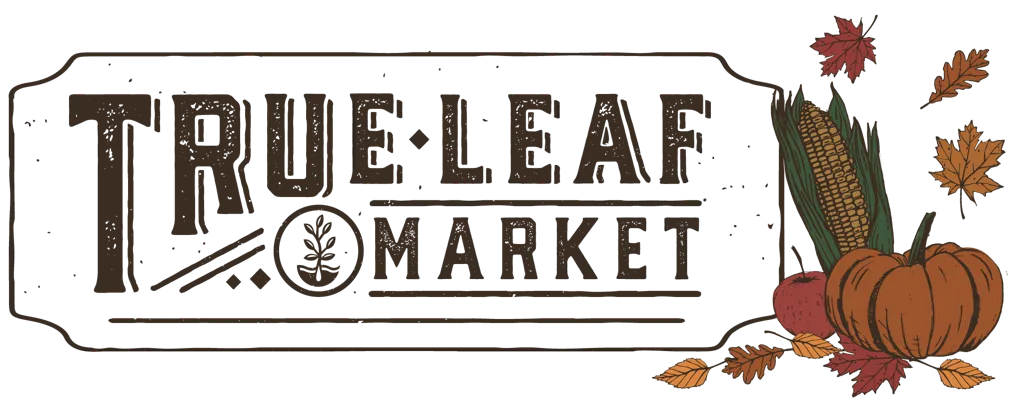Download Free Vegetable Growing Guide PDF
Growing Rainbow Bell Blend Peppers in the Vegetable Garden
Starting pepper seeds is straightforward but requires some planning. Approximately two months before the last spring frost in your area, begin your seeds indoors using grow lights, heating pads, and growing cells or trays. Fill the trays with a well-drained seed starting medium, such as coconut coir, and water it thoroughly. Plant the seeds about a quarter of an inch deep into the medium and cover them. Mist the seeds to keep them in place and ensure they are sufficiently saturated. Maintain consistent moisture levels for the seeds. Using a humidity dome can help minimize water evaporation and keep the environment ideal for germination.
Once the seedlings start to emerge from the soil, they need 8-14 hours of light daily to thrive. Without adequate light, the seedlings will become leggy and weak, hindering their growth into healthy plants. While a sunny windowsill might provide enough light, most growers find that supplemental lighting is the most effective solution. Heat mats are also beneficial, keeping the seed starting medium at a warm 70-80 F, which is crucial for proper germination.
Consistently care for the pepper seedlings by providing sufficient light, moisture, and ventilation. After the true leaves appear, lightly fertilize with a balanced feed to support healthy growth. As the threat of frost diminishes in your area, begin the hardening-off process by gradually exposing the seedlings to outdoor conditions. Start by placing them outside for a few hours each day, incrementally increasing their outdoor time to acclimate them to temperature fluctuations, light intensity, and wind. Bring the seedlings indoors if temperatures drop below 55 F to protect them from cold stress.
Once the danger of frost has passed and the seedlings are fully hardened off, transplant them into your garden. Prepare the garden bed by adding compost and any other necessary soil amendments. Space the plants 18-24 inches apart to ensure proper air circulation and prevent disease. Continue to care for your pepper plants throughout the growing season by providing deep, regular watering, monitoring for pests and diseases, and maintaining a weed-free area. Mulching around the base of the plants can help retain moisture and reduce weed growth, promoting healthy, vigorous pepper plants.
Harvesting Rainbow Bell Blend Peppers
Harvest them when fully colored and shiny by snipping or slicing the fruit from the plant, leaving about a half inch of stem attached. Prompt harvest often inspired a greater yield overall. Storing them in the crisper drawer of your refrigerator can make them last longer.
About Rainbow Bell Blend Pepper Garden Seeds
The Rainbow Bell Blend features a mix of seeds of plants that will produce yellow, orange, red, green, and purple bell peppers, respectively.
Being one of our best-selling custom pepper blends, it is a tried and true customer favorite that you can often spot being grown in all sorts of settings.
These peppers are drought tolerant and have been grown successfully in garden beds, raised beds, greenhouses, and containers.
The plants can grow up to 3 feet tall but usually land somewhere between 2 and 3 feet. Tomato cages can prevent breakage and fruit loss if a plant is particularly heavy-yielding.
All of these peppers are sweet, thick-walled, and robust. They hold up well when stuffed, put in soups, and any other culinary application!
Tips From Our Gardeners
"I love suggesting this mix to those who grow peppers for the purpose of making fajitas. Imagine a colorful batch of chicken or beef fajitas with all these different colors in it! My mouth is watering just thinking about it!"
 |
- Lara Wadsworth, True Leaf Market Writer
|
Other Resources
Rainbow Bell Blend Pepper Seeds Per Package:
- 300 mg - Wholesale - Approximately 30 Seeds
- .25 oz - Wholesale - Approximately 1,250 Seeds
- 1 oz - Wholesale - Approximately 5,000 Seeds
- 4 oz - Bulk Seeds - Approximately 20,000 Seeds
- 1 lb - Bulk Seeds - Approximately 80,000 Seeds
Non-GMO Rainbow Bell Blend Pepper seeds are available for Fast Free Shipping on qualifying orders.
=======
ATTRIBUTES
Basic Info
| Latin Name: |
Capsicum annuum
|
| Pepper Type: |
Sweet - These peppers (think Bell Peppers) are almost all at 0 on the Scoville Scale, meaning that they have no heat at all. A handful of sweet peppers do register very low on the Scoville scale but are still classed as sweet peppers. For example, Pepperoncinis are sweet peppers but usually rank around 100 to 500 on the Scoville Scale. |
| Rainbow Bell Blend Pepper Color: |
Red, Orange, Yellow/White, Green, Purple |
| Rainbow Bell Blend Pepper Flavor: |
Sweet and Buttery |
Growing Info
| Hardiness Zone: |
4, 5, 6, 7, 8, 9, 10, 11, 12, 13 Technically a tender perennial, but commonly grown as an annual. Perennial in zones 10 and 11. |
| Days to Maturity: |
60-69 (from transplant) |
| Days to Germination: |
7-10 |
| Seeding Depth: |
0.25 inch |
| Plant Spacing: |
18-24 inches |
| Row Spacing: |
24-36 inches |
| Plant Height: |
24-36 inches |
| Growth Habit: |
Upright |
| Soil Preference: |
Well-draining, loose (sandy loam), slightly acidic (6.5 pH), and moisture retaining. Too much nitrogen in the soil may lead to more foliage production and less fruiting, similar to tomatoes. Peppers also need sufficient amounts of phosphorus and calcium. We recommend using a balanced fertilizer for the best results. |
| Temperature Preference: |
Warmer (70-85 F). During high heat, foliar and flower development slow or pause until temperatures return to the preferred range. |
| Light Preference: |
Full Sun |
Other
| Direct Sow: |
No |
| Start Indoors: |
Yes. Start Indoors 6-8 weeks before your last spring frost date. Harden off and transplant when seedlings are 6-8 inches tall. Bury the stem slightly deeper than the root ball. Avoid planting hot and sweet peppers right next to each other, as they can cross-pollinate, potentially affecting the flavors of your harvested peppers. |
| Pepper Pollination: |
Peppers have perfect flowers (male and female parts) and will self-pollinate. However, wind and pollinator activity may increase success rates of fertilization and fruit production. |
| Plant Width: |
18-24 inches |
| Deer Resistant: |
No |
| Scoville Heat Units: |
0 |
| Heat Level: |
Sweet - Peppers with no heat. 0-99 on the Scoville Scale. Example: Bell Peppers. |
| Growth Speed: |
Very Early - Ready for harvest around 45 to 60 days from transplant. |
| Germination Temperature: |
80-90 F |
| Pests and Diseases: |
Peppers are commonly susceptible to cutworms, aphids, flea beetles, bacterial spot, Phytophthora, sunscald, and blossom end rot. To avoid or reduce problems with pests and diseases, stick to a regular watering schedule (drip irrigation is preferred), plant into well-draining soils, and utilize practices such as crop rotation. When taking pest control measures, consider utilizing integrated pest management principles by using mechanical removal, biological control, and other cultural practices before turning to chemical agents. |
| Garden Size: |
Greenhouse, Garden Plot, Raised Bed, Container |
| Pepper Use: |
Stuffing, Roasting, and many other dishes |
| Climate Tolerance: |
Drought |



















